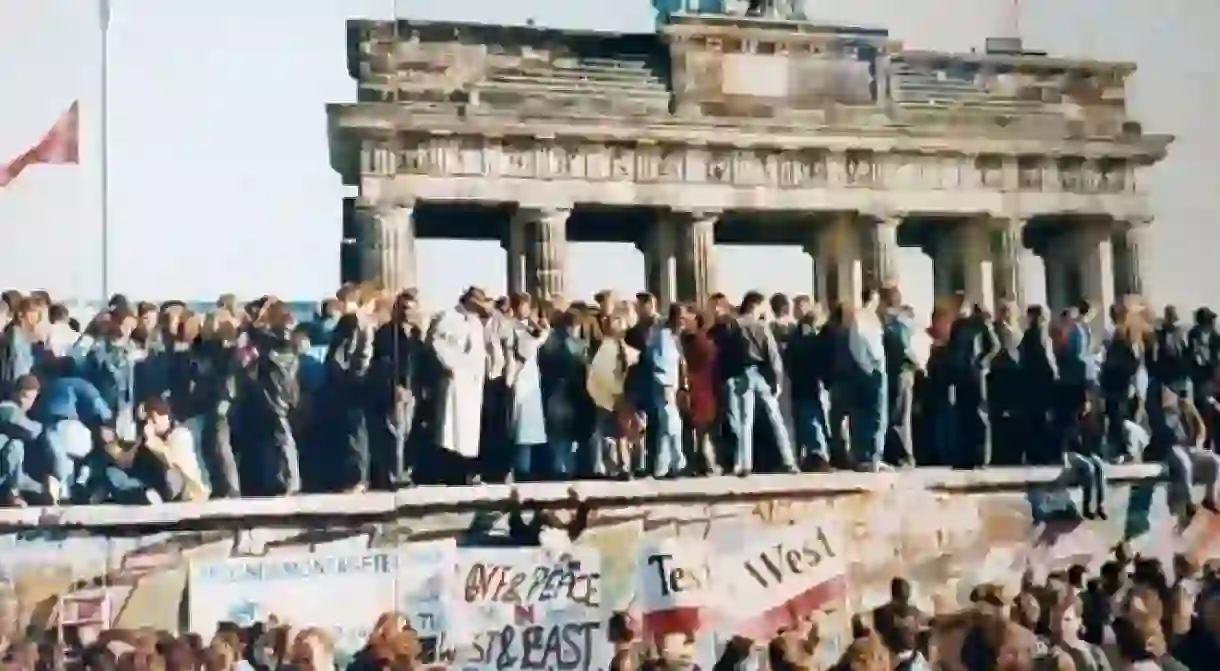11 of the Berlin Wall's Best Kept-Secrets

The Berlin Wall was the most tangible aspect of the Cold War era, symbolising oppression and dividing Germany’s capital into east and west. Construction began in 1961, and it wasn’t until 1989 that the structure finally crumbled. That much of history is well-known – here are some more obscure facts about the Berlin Wall.
The initial proposal to build a wall was rejected
Although the Berlin Wall remains the most iconic symbol of the Cold War, it was only erected some 15 years into the battle of opposing ideologies. Over two million East Germans moved to West Berlin between 1949 and 1961, with the original proposal of building a wall to keep people in being rejected. After an unprecedented ‘brain drain’ of inhabitants, Soviet leaders eventually changed their mind.

The Berlin Wall was made up of two walls
The barrier between east and west actually consisted of two walls. The space between the massive concrete slabs was packed with trenches, watchtowers, floodlights, patrol dogs and trip-wire guns, and became known as the ‘death strip’.

There were some great escapes
People managed to escape the fortified barrier in the most amazing and creative ways. One notable escape was in 1963 by Horst Klein, an East German acrobat who used a high-tension cable to tightrope over the wall, well above the heads of the patrolling guards. Other daring methods of escape included a hot air balloon a zip line, and casually flashing the guards a Playboy club card that closely resembled a diplomat’s pass.
Even border guards wanted to flee
Hollywood often portrays the border control guards as austere and soulless machines who did as they were told, fully obedient to the East German regime. In actual fact many of these guards would try to escape themselves, using their uniform as a way to get into West Berlin without any questions being asked. In the first two years of the wall’s existence, more than 1,300 desperate guards escaped their oppressed lives and duties by fleeing to the west.

The rabbits of the Berlin Wall
For 28 years, the harrowing strip of land known as the ‘death strip’, became a safety zone for thousands of wild rabbits whose population flourished there.

Lives lost
According to the Centre for Research on Contemporary History Potsdam and the Berlin Wall Memorial Site and Documentation Centre, it is estimated that 138 people died trying to cross the Berlin Wall.
Berlin’s ghost stations
When Germany was divided, the beloved U-Bahn (underground subway) transported border traffic between former West Germany and the GDR. However, many of the borders between east and west were quite random, and some U-Bahn lines coming from West Berlin would actually travel under East Berlin. As a result, it became strictly enforced that passengers could not get off the train until it reached West Berlin again. These stops in forbidden land became known among locals as ‘ghost stations’.

The Wall started crumbling in Budapest
In 1989, six months before Berliners began to chip and smash away at the Wall, Hungary had opened its border with Austria. This in turn lead to the mass exodus of thousands of East Germans to what was then Czechoslovakia – so it was actually Budapest that made the first crack in the lead-up to dismantling the Berlin Wall.
It went up as quickly as it came down
Both the construction and tearing down of the wall happening in a matter of days. When it was erected, people literally woke up one morning to find a barricade being laid down, which continued to be fortified over the next weeks. At the fall of the wall, travel restrictions were immediately lifted, sparking an instant mass migration of thousands of people.

There's more than just Checkpoint Charlie
Fancy your own piece of Wall?
After the Wall was dismantled, many people kept pieces of it as souvenirs, which you can even buy today on eBay.













